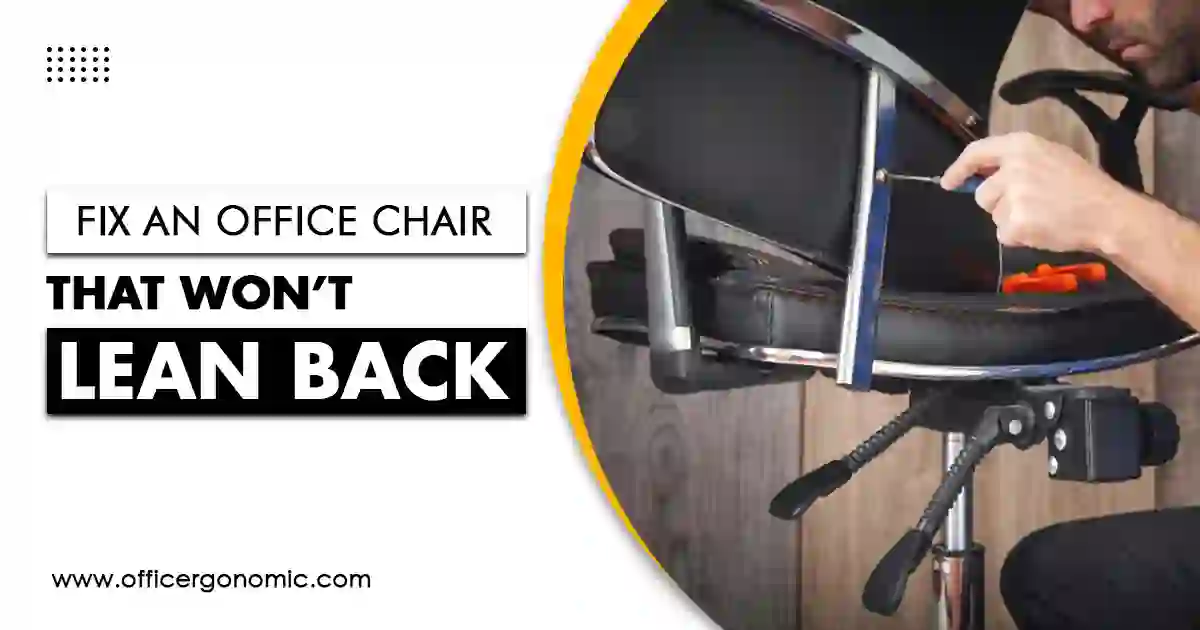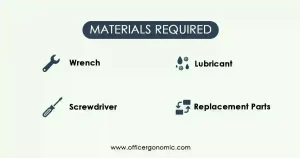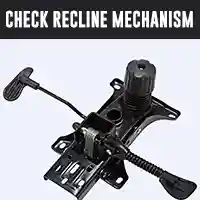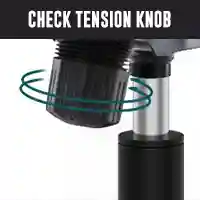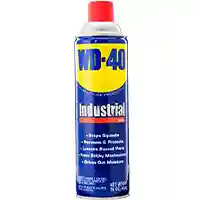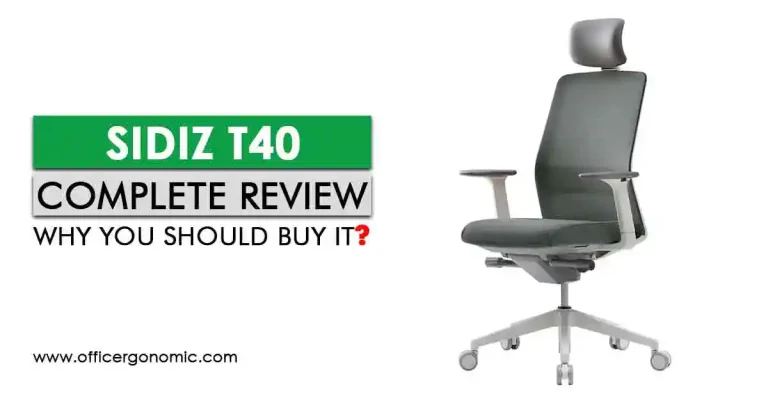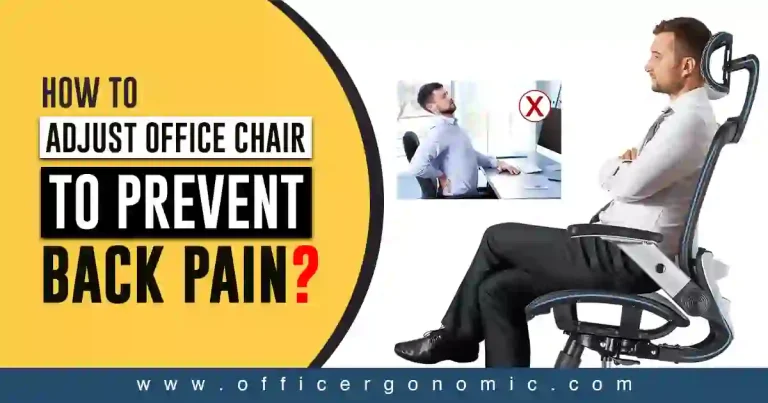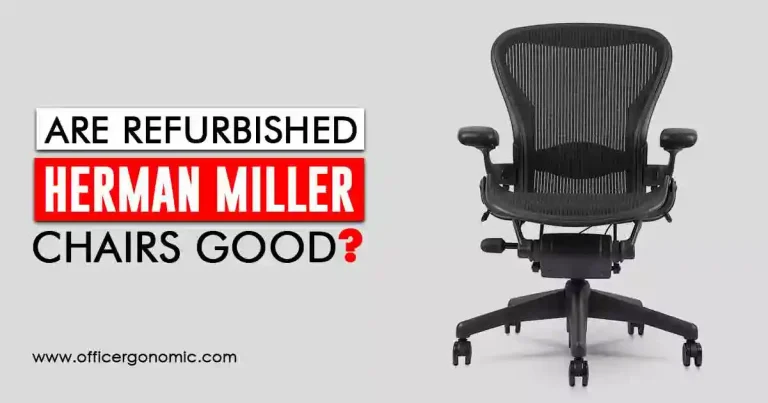How To Fix An Office Chair That Won’t Lean Back?
The reclining feature is the most sought feature of an office chair that makes the sitting experience super comfortable. Most high-quality office chairs come with this feature, making the user sitting experience comfortable.
A leaning chair allows the user to sit back and relax while working and during breaks. But what if the reclining feature stops working? Is there a way to fix it? The answer is yes. If your office chair doesn’t lean back because of a faulty gas cylinder under the seat plate or dysfunctional chair tilt mechanism, or any other reason, you have ways to fix that.
How? This article will throw some light on how to fix an office chair that won’t lean back. We have mentioned a list of potential causes that prevent a chair from leaning back behind along with possible repairs for each reason. Take a look and find out what is hindering the recline mechanism of your chair and adjust it accordingly.
How to Fix an Office Chair that won’t Lean Back?
In a reclined position, the backrest of the user takes some weight off the upper body which in turn decreases the pressure on discs and muscles. Therefore, a reclining mechanism is undoubtedly a must-have feature of any office chair.
However, excessive use, lack of maintenance, exposure to dust and dirt, and corrosion due to moisture can lead to its wear and tear. When the recline mechanism does not function properly, it can become a big headache for the user.
Luckily, fixing this problem is not very complicated. It can easily be fixed by making some small adjustments using basic tools and a little experience.
Materials Required
To fix an office chair that won’t recline back properly, you would need the following materials:
- Adjustable Wrench
- Screwdriver (Phillips or flathead according to the screws used in an office chair)
- Lubricant
- Replacement parts (depending upon the faulty parts such as recline lever or tension spring).
You can easily get all these tools and materials from any hardware store in your surroundings.
Fixing Office Chairs that Won’t Lean Back
The solution to a problem starts with its identification. There can be many reasons behind an office chair that won’t recline back. Some of the key causes along with the possible solutions are mentioned below:
Check the casters
Casters, also known as wheels, located at the bottom area of the chair, are responsible for moving it around. These casters may become damaged either due to a missing screw or dust or debris stuck in them. Broken or damaged casters can also prevent a chair from smoothly leaning back.
Roll the chair on a hard surface to determine whether it moves smoothly. If it doesn’t, you can do the following things to get it fixed:
- Clean all the debris from office chair casters. A detailed explanation of cleaning casters of an office chair can also be found here.
- Check all the nuts and bolts and tighten them if they are loose.
- Lubricate the casters with a silicone-based lubricant such as WD-40.
- If there is a visible crack or damage on the casters or if the casters are bent, replace them with new ones. Replacing casters is pretty much easy. You just have to remove the old casters, put new casters in their place and screw them tightly.
Clear obstructions stuck in the recline mechanism
Another potential hurdle behind a chair that won’t lean back can be the dust, debris, or small objects stuck in the recline mechanism of an office chair. Check for any dust or debris in the recline mechanism and clean it using a small brush or compressed air.
Make sure that small objects such as pens, pieces of paper, paper clips, hairs, rings, etc are not fallen into the recline mechanism as these things can also hinder it from working properly.
Also, check that there is sufficient clearance behind the chair to recline. If the chair is too close to the wall or another piece of furniture, it would prevent it from reclining. In addition, a piece of rug or footrests can also block the way of the recline mechanism. Therefore, find out and clear all such obstructions so that your office chair may lean back smoothly.
Check the tension knob
Oftentimes, the tilt tension adjustment knob, responsible for controlling the tension of the recline mechanism, becomes too tight and the chair won’t lean back smoothly. In that case, you have to loosen the knob so that your office chair lean back efficiently.
The knob is generally present underneath the desk chairs, however, you can also flip the chair upside down to easily reach it out. When you flip the chair, the knob is exposed to you and you would notice a plus or minus mark on it. These marks show how tension is loosened or tightened to engage the tilt.
In general, clockwise rotation increases the resistance and counterclockwise rotation decreases the resistance and makes it easy to recline. Accordingly, rotate the knob in the counterclockwise direction in small increments until it attains the desired tilt. Now flip the chair upright and check its working by sitting on it.
Be careful and avoid loosening the knob too much as it would damage the chair if a large weight is suddenly put on it. However, if the tension knob is already loosened, then there might be some other issue with the recliner of your office chair.
Adjust/replace the recline lever
A faulty recline lever can also prevent a chair from smoothly leaning. If the lever is stuck in one position or moves freely even in the locked position, it needs to be repaired or replaced depending upon the extent of the damage.
For this, remove the seat of the office chair by flipping it upside down and unfastening the bolts that hold it in its place. After removing the seat, the recline lever would be exposed to you. If it is simply dislodged from its original position, set it back to the right position.
However, if there is a crack or dent on it, you have to replace it. For replacing the recliner lever, remove the old one and screw the new one in its place.
Clean the rust
Sometimes, rust develops in the metal parts of the office chair’ reclining mechanism due to exposure to moisture or humidity. Check if there is any rust developed on the chair and fix the issue.
Clean the rusted parts of the chair thoroughly with a sandpaper or wire brush and try to remove maximum rust from it. Apply an anti-rust spray on the metallic parts to prevent future rust or corrosion. In addition, apply a good lubricant on the moving parts to make them loosen up.
Lubricate the recline mechanism
Sometimes, a lack of lubrication also leads to a harder recline mechanism. The recliner mechanism of the office chair consists of a set of moving parts that become dry and stiff if they are not lubricated regularly.
Lubrication becomes more important if the office chair has been in use for a long period. Therefore, lubricate all the moving parts of the recliner with a good silicone-based lubricant such as WD-40. It would surely smoothen the recline mechanism and your chair would be able to lean back.
However, if any of the above-mentioned solutions are not working out, consult the manufacturer or seek help from a professional. If there is a large crack or dent in the recliner mechanism, it’s better to buy a new office chair rather than invest in its repair.
Last Thoughts!
In a nutshell, fixing an office or desk chair that won’t recline back is not a very arduous task. There are myriad reasons behind the problem. Sometimes, the tension knob becomes too tight and prevents the recline mechanism from functioning properly.
Obstructions stuck in the recline mechanism such as pen, hair, or pieces of paper can also block its way to reclining. A misplaced or broken recline lever also hinders ergonomic office chairs from leaning smoothly. Once you successfully identify the source of a problem, it can be easily fixed according to the procedures mentioned above.

